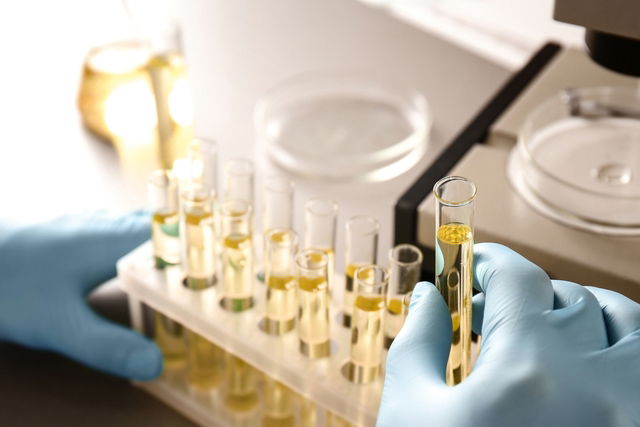Urate crystals are a type of sediment that can appear in the urine due to specimen mishandling or due to acidic urine pH. Many times, these crystals can be found with other types of sediments, like uric acid crystals or calcium oxalate crystals.
Urate crystals do not cause symptoms, and are usually only noted after routine urine testing. However, high levels of urate crystals in the urine may change urine color to pink. You should advise your doctor if you notice pink urine.
Treatment for urate crystals depends on their underlying cause. The doctor mar recommend dietary changes (e.g. decreasing high protein or high calcium food intake), or more specific treatment if these crystals are related to liver or kidney dysfunction.

Common causes
Urate crystals are directly related to urine pH levels. They are often noted when pH levels are equal to or less than 5.5 Urate crystals can also emerge due to the following conditions:
- High protein diet
- Low water intake
- Gout
- Chronic kidney infection
- Kidney stones
- Gallbladder stones
- Liver disease
- Severe kidney disease
- High vitamin C diet
- High calcium diet
Urate crystals can also appear due to specimen mishandling. Lower temperatures of specimen can lead to the crystallization of some components in the urine. Therefore, urine analysis should be completed up to 2 hours after initial collection.
Confirming a diagnosis
Urate crystals in the urine do not typically cause symptoms. They are usually identified through a routine and microscopy (R&M) urine test. also known as a urinalysis. This test involves looking at the urine specimen through a microscope to evaluate for the presence of sediment.
A urinalysis also looks at urine pH. More acidic urine may be associated with the presence of urate crystals as well as other sediments, like uric acid crystals or calcium oxalate crystals. This test also looks at other urine characteristics, like the presence or absence of epithelial cells, microorganisms, leukocytes and red blood cells.
Urate crystals usually have a granulated appearance that vary from yellow to black in color. They are usually only visualized under a microscope, although large amounts can be visualized macroscopically and can cause obvious changes to urine color.
Treatment options
While urate crystals are not specifically treated, their underlying cause may be. For this reason, urine results should always be interpreted alongside the patient’s symptoms as well as other test results before initiating treatment.
If urate crystals are related to specific diet habits, the doctor may recommend some specific food changes, like avoiding great amounts of protein or calcium. Liver or kidney issues that cause urate crystals may require diet changes as well as medication use, depending on the diagnosis.
When urate crystals are identified on their own without any other abnormalities, the doctor may ask you to repeat the urine test to rule out specimen mishandling.
